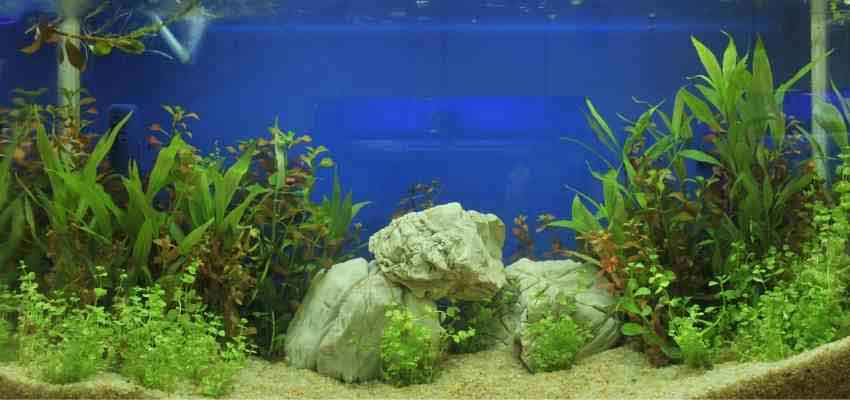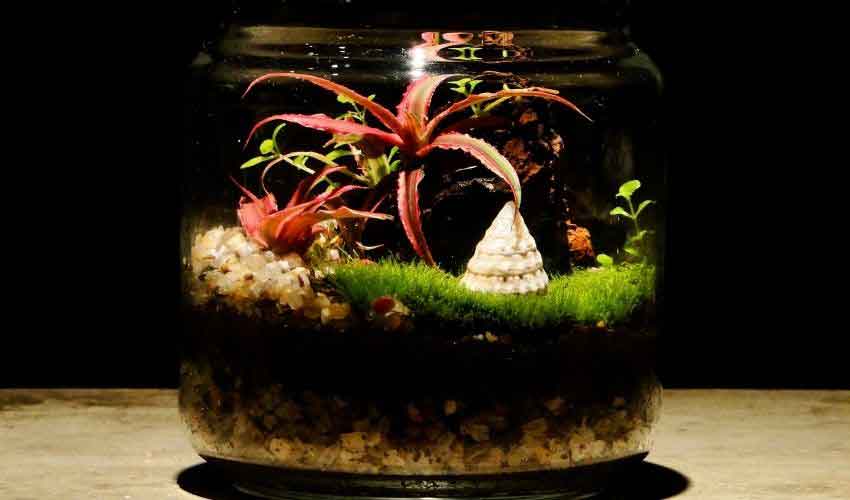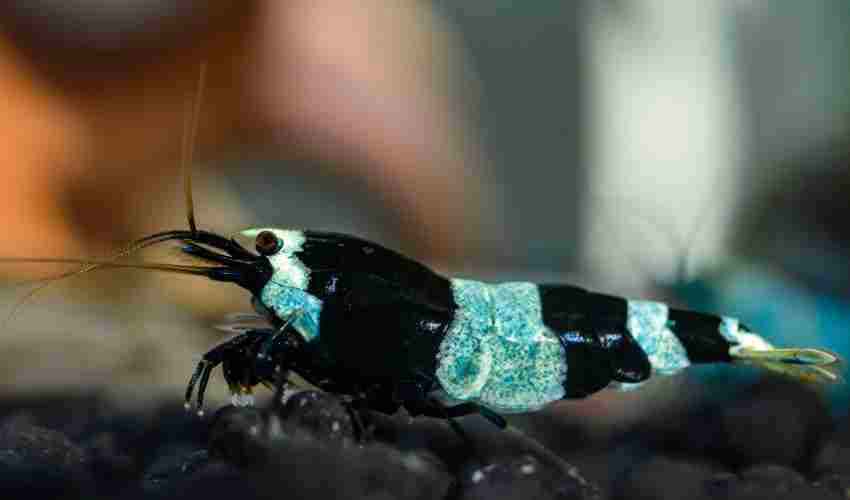In this blog, we’ll talk about panda shrimp care. Panda shrimp are very interesting types of shrimp that are the result of a genetic mutation. They are highly sought-after shrimp that are known for their coloring.
About the Panda Shrimp
The panda shrimp (Caridina cantonensis var Panda) is a peculiar little shrimp. It’s rumored that Taiwan Bees like the Panda shrimp are not as easy to care for as other freshwater dwarf shrimp. It’s a shrimp probably best for more experienced shrimp keepers some might say. But, that’s not always the case.
Taiwan Bees are the result of a mutation of crystal red or crystal black shrimp. Today though, these types of shrimp are selectively bred and are no longer left to chance.
In appearance, panda shrimp come in different variations of the colors black, blue, and white. Also, there are various other kinds of Taiwan Bees.
Other Types of Taiwan Bee Shrimp:
- Blue Bolt
- Blue Bolt Mosura
- King Kong
- King Kong Ghost
- Red Ruby
Origin
The panda shrimp are native to Southeast Asia. Although these shrimp are the result of a genetic mutation that occurs naturally, these shrimp were originally bred for their traits in Southeast Asia. Today, they are considered to be primo shrimp in the shrimp-keeping hobby.
Temperament
No, panda shrimp are not aggressive shrimp. They can be kept with select types of freshwater fish, which we’ll look at further down in the blog.
Panda Shrimp Care
Below is some panda shrimp care information to help you raise your shrimp. The setup of your shrimp tank—the substrate, and the water are all very critical pieces of building up a healthy environment for your shrimp.

Tank Size and Setup
Tank size should always be determined based on what aquatic life you are keeping and how much aquatic life you plan to keep. For shrimp, many different size fish tanks will work, but a 20-gallon fish tank will work nicely. Although 10-gallon tanks work well, too. Simply put, these little guys don’t need huge tanks.
When it comes to the substrate, you want active soil to help support the pH of the tank. You can first add a layer of gravel to the tank and then add fine-grain gravel or river sand.
Panda shrimp and other shrimp need tanks that are planted. Moss will work well. Moss is a great place for beneficial bacteria to live. Also, it will give shrimp and shrimplets places to hide as needed.
In short, just make sure you provide your shrimp with some plants. I recommend slow-growing plants that don’t require a lot of upkeep.
Additionally, driftwood and hideouts will work well in a panda shrimp tank and are recommended.
Filter Considerations
Cannister or sponge filters are recommended for panda shrimp or any shrimp for that matter. That’s because these guys are obviously little and can easily be sucked into a regular filter. This can, of course, kill or maim your shrimp. Note, however, if your shrimp do lose their limbs, they can regenerate them over time. Some shrimp keepers state that doing a water change with water that is just a slight bit cooler can promote molting and lead to regeneration.
Panda Shrimp Care: Water Conditions
Fill your tank with RO/DI water or Reverse Osmosis De-Ionized water. It’s pure water and allows you the opportunity to remineralize your water. You can use Bee Shrimp Water Remineralizer for the remineralization process.
Also, shoot for a pH range between 6.2 to 6.4 pH.
Like with any other fish tank before adding aquatic life, you want to be sure and cycle your tank for three to four weeks to build healthy and beneficial bacteria in the tank. This will of course help care for any toxins in the tank.
Before adding your shrimp to the tank, be sure to get them acclimated to the water first. This can be done with the drip method.
For the drip method, take a tube and run it from the top of your fish tank into a smaller container with your shrimp. It will slowly drip into the smaller container and allow your shrimp to become acclimated to what will soon be their new environment.
Jarrariums for Panda Shrimp

Panda shrimp are pretty cool to keep. But, if you are concerned with space or money, keeping a couple Panda shrimp in a jarrarium could be an easy work around. Making a jarrarium is pretty simple and extremely cheap in most cases. All you need is a jar, some creek water, sand, gravel, a plant, and of course your panda shrimp. Jarrariums are small, of course, but they are pretty cool hobby. Learn how to make a jarrarium in just seven easy steps.
What Do Panda Shrimp Eat?
Shrimp eat decaying plant matter and algae. They can be fed high-quality shrimp food, frozen vegetables, and sinking algae wafers. If you are raising Panda shrimp or any other type of Taiwan Bee, feed them the good stuff.
Tank Mates
You have to be careful with what freshwater fish you put in the tank with shrimp. That’s because these guys are little and can easily become food for other larger or more aggressive types of fish. With that in mind, below are some recommended tank mates for your panda shrimp.
- Danios
- Guppies
- Rasboras
- Tetras
- Pygmy Corydoras
- Bristlenose Plecos
- Snails
Lifespan
Just like the ghost shrimp and other shrimp, panda shrimp don’t have a long lifespan. They live for around one to two years.
Recap: Panda Shrimp Care
Panda shrimp are bee shrimp. They appear naturally from a genetic mutation. However, over the years, panda shrimp have been selectively bred for shrimp keepers.
Taiwan bees are not aggressive. Although many think that panda shrimp care can be a bit dfficult. When cared for correctly, it’s really not that hard. It’s just that you don’t have as much wiggle room as you might have with other types of shrimp and aquatic life.
Tanks for Taiwan bees should consist of an active substrate and it is a good idea to use RO/DI water which can then be remineralized.
Also, keeping slow-growing plants in your tank with driftwood and a few hideouts is recommended. This gives your shrimp a place to hide out and the plants help support healthy bacteria in the tank.
Lastly, before you add any shrimp to a fish tank, be sure that the water is properly cycled. This can take a few weeks, but it’s an essential step in caring for your shrimp and other aquatic life.
Check it Out

